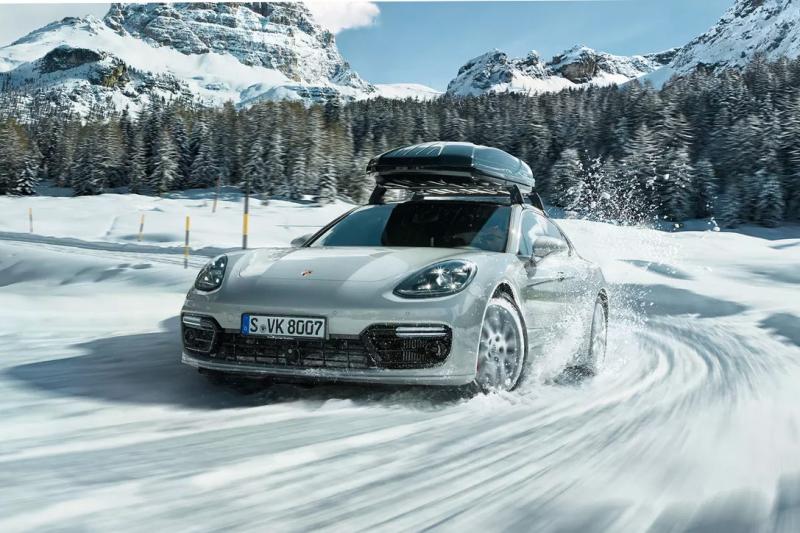
by Scott Stillings - Posted 5 years ago

Keep these four car-care tips in mind as the mercury plummets. You don't want to be stranded by a dead battery or get into an accident because you can't see out your windows. If you haven't taken some of these preventive-care steps, do them as soon as you can so you're prepared for the next big chill.
Your vehicle's battery is especially hard hit when the mercury plummets. Cold temperatures reduce its cranking power. In fact, at about 0° F, a battery has only about half the cranking power it has at 80° F.
To check a conventional battery, remove the plastic caps on the top and check the fluid level. (See your owner's manual.) If the fluid is low, add distilled water. On maintenance-free batteries, check that the window at the top of the battery indicates a fully charged state. If it's more than five years old and shows signs of weakness, replace the battery with a top-rated model.
You can have the battery professionally tested at a service station, auto parts store, or repair shop. A tired battery may just need to be charged. But if it's defective or just worn out, it's best to replace it before it goes completely dead. (Check our buying guide and ratings for car batteries. Worst case, be sure you know how to jump-start a car.)
You have to replace wiper blades more often than you might think. Our tests have found that even the best-performing wiper blades start to lose their effectiveness in as little as six months. Streaks or missed expanses of glass are sure signs that the blades are ready for retirement.
While it's possible to stretch their life by cleaning the rubber edge of the blade periodically with a paper towel and glass cleaner, it isn't safe to do that all winter long. Instead, get yourself new blades. We recommend replacing wiper blades as often as twice per year. Most wiper blades are easy to install, and some stores, such as Advance Auto Parts, will perform the replacement work free of charge.
If you can't see out the windows, you're a danger to yourself and everyone around. Don't try to use the wipers and those brand-new wiper blades to remove ice from the windshield. Instead, use an ice scraper on frosty mornings. If you park outside, place the wipers in the raised position when it's going to snow overnight to keep them from freezing to the windshield.
With dirt, mud, and salt residue being kicked up off the road, it's likely that you'll be using your windshield washers a lot, so keep your windshield-washer reservoir filled with a winter-blend washer solution that contains an antifreeze agent.
Also make sure the heater is functioning properly and that plenty of warm air is being directed to the windshield when it's in the defrost mode. To help prevent your windshield from fogging up, run the air-conditioning system (with the temperature set at a comfortable level) to dehumidify the air.
Finally, check that all the vehicle's lights are working properly and that the lenses are clean, so that you'll have optimum visibility at night and motorists front and rear will be able to see you.
Cold weather can beat up your engine, too. Motor oil thickens when cold, making it harder for the engine to turn over. Check your owner's manual for the manufacturer's recommendation. Generally, you should be using multi-viscosity oil that has a "W" in the viscosity index, signifying that it's formulated for winter use. Typical formulas that are recommended for modern engines include 5W-20, 5W-30, and 10W-30, which provide good oil flow at low temperatures and can often be used year-round. Whenever you have the oil changed, replace the oil filter as well to ensure the system has the maximum amount of flow.
While the car is in the shop, have the radiator and heater hoses checked for cracks, leaks, or contamination from oil or grease. The hoses should be firm yet pliable when you squeeze them. Scrap them if they feel brittle or overly soft.
Try to keep your coolant mixture in a 50/50 ratio of antifreeze and water. This will keep your coolant from freezing until temperatures are well below zero. Colder conditions, however, can call for a 60/40 or 70/30 ratio. Under no circumstances should you use a higher antifreeze-to-water ratio than this.
Check out these 5 things to know about oil changes for your car.
We don't have brutal winter conditions in South FL, but these are simple common sense maintenance programs that are good to know!
Remember if you need a Buy Here Pay Here car or a Buy Here Pay Here dealer in Bradenton, FL or Sarasota, FL DriveNation USA can help. We have low down payments and affordable terms. We also have a huge selection of Cash Cars.
Have a great winter!
Scott Stillings
DriveNation USA
www.drivenationusa.com
**Thank you to Consumer Reports for the article credit**